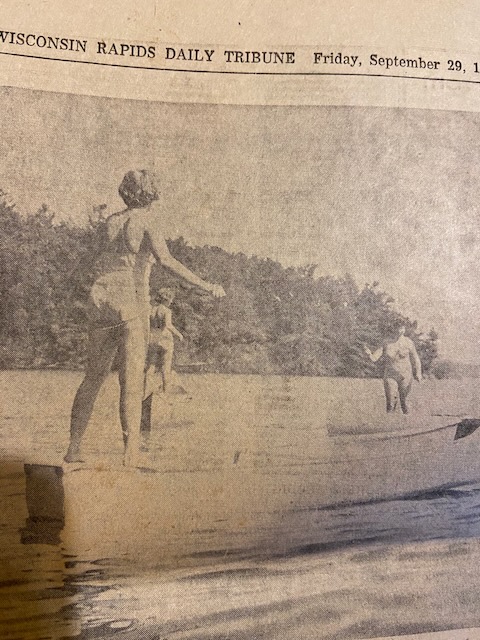You leave town for a few days, and the winter squash sends out reconnaissance squads to see what is the best route of escape, the garden path, or the sneaky run alongside the tomato plant. Then, the day you get home from Door County, the power goes out for a couple hours. Welcome home! But that’s not what this is all about.
What this is really about is chillin’ on vacation. For those of you who don’t know, Wisconsin is like a mitten, and the thumb is Door County. The waters of Green Bay on one side and Lake Michigan on the other, with cherry orchards and hiking paths, and artists, and… Well, it’s just plain ol’ down-home small town delightful.
Begin the morning with a leisurely stroll to the little coffee shop down by the marina in Fish Creek. Yes, the towns even have delightful names: Egg Harbor, Sister Bay, Gill’s Rock, Bailey’s Harbor. We spent an early hour or two watching people walk their dogs (many, many dogs!), or come down the gangplanks of yachts bigger than our house, or maneuver a mega-truck in tight quarters to off-load boats so they could enjoy getting sunburned out on the water. It was a good place to discover that, yes, there were going to be fireworks, generously paid for by a group of summer residents. Or no, the merchant sitting at the next table wouldn’t be spending the winter up here this year. Responding to a conversation at the next outdoor table wasn’t considered tacky either.
Some enterprising soul ran what appeared to be a water taxi service with his jet ski. Pulling a dinghy behind, he brought people in to the dock from their sailboats moored out in the bay, then headed back out for another load. Coming in a close second was observing a golden retriever, tricked out in a life jacket, getting ready to go aboard a little Zodiac boat. He padded back and forth, aware of his owner packing in a bag cooler, oars, sundry other items. Finally, nose down, he seemed to be ready. “Seemed” being the key word there. Said owner ended up gently pulling the dog into the boat. Said dog wasn’t too sure about the whole operation. Though, when they actually set off, the dog seemed perfectly happy to stick his nose out starboard while his tail wafted off portside.
Wisconsin is well known–and deservedly so–for frozen custard. One of the delights of the Midwest, the stuff is creamy and delish! We frequented Not Licked Yet, one of our favorite spots for performing quality control on waffle cones piled high with Butter Pecan, or Mint Chocolate Chip, or just plain Vanilla or Chocolate. Note the capital letters. This is not your grandma’s ice cream. This is premier stuff. Right across the street is Wild Tomato with their wood-fired pizza oven. Dessert first, then dinner? Or the other way around? One of the many tough decisions up in Door County.
This was the weekend of the Fourth of July, so fireworks were de rigeur. But so was the time-honored Egg Harbor parade. Anybody could join, so we expected a rather ragged parade. But this was top-notch small town stuff, with more than a sprinkle of creativity and candy. Dancing chimneys singing out, “Got a dirty chimney? Who ya gonna call? Tim’s Chimneys!” to the tune of the Ghostbusters’ theme. Grocery cart fancy maneuvers from the local Market employees, during which they gleefully plotched each other with water balloons and flung buckets of water everywhere. A float with a couple reclining on a bed with the banner: “Make your own fireworks at Egg Harbor Lodge.” I’ll leave that one alone… The University of Wisconsin marching band–well, a small contingent of them, anyway–playing the fight song with a lot of arm-pumping to go along. Many many other units, some groups, some singletons. Last came a group of horseback riders with lassos. Gaggles of kids, and grownups too, formed tight little pods out on the street, and the rider wound up and dropped a perfect loop right over the entire bunch. Pretty impressive! (Good thing they were last. The following truck carried a shovel and…well, you get the idea.) Rain was predicted, and, sure enough, after a “droplet warning” at the end of the festivities, giving plenty of time to get to the car and halfway back to Fish Creek, the skies opened and gifted us with much needed rain. For us, it was Mother Nature’s car wash as well.
Everywhere we went, empty parking places were right there and waiting for us, even when we made a wrong turn (fortuitous that!). The people were Midwest friendly, the hiking trails were bug-free, the weather picture-perfect. Even the smoked fish shop was still there. What more could we ask?
All good things must come to an end, I suppose. As Shakespeare put it in I Henry IV, “If all the year were playing holidays, to sport would be as tedious as to work.” Clearly, Door County went into mourning the morning we left. We awoke to fog on the water and an overcast sky, which didn’t lift until we were well down the line.
We’ll be back.
(Check out the Photos section for lots more visual fun!)

